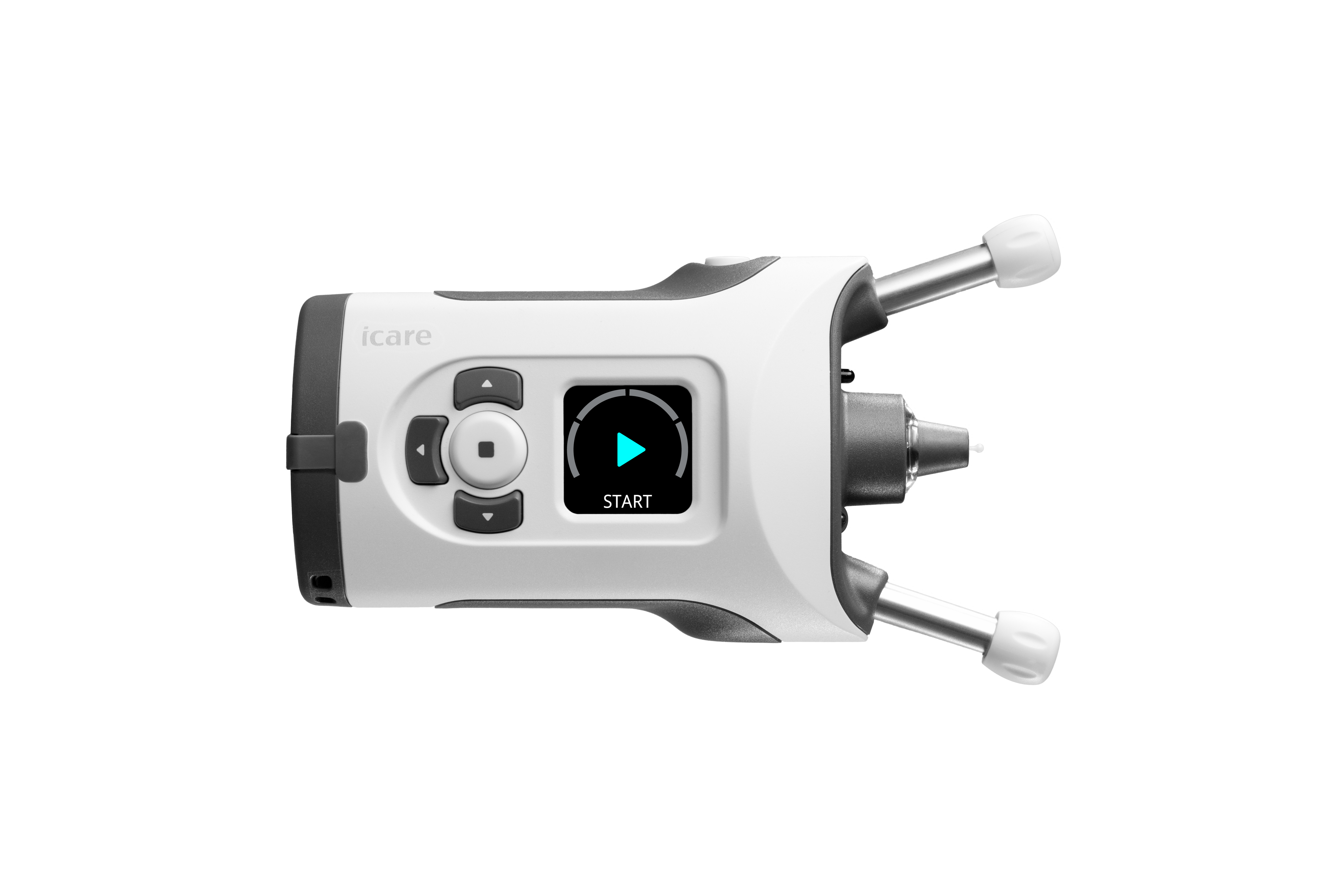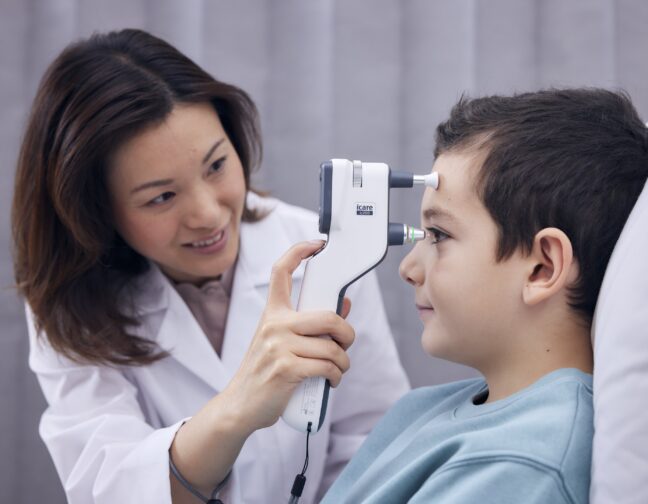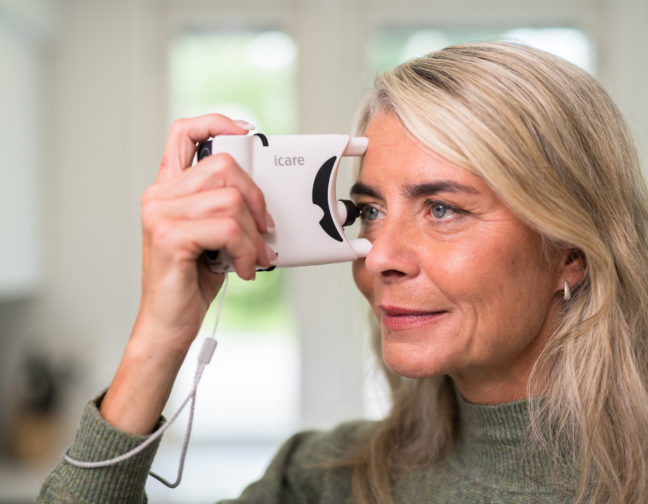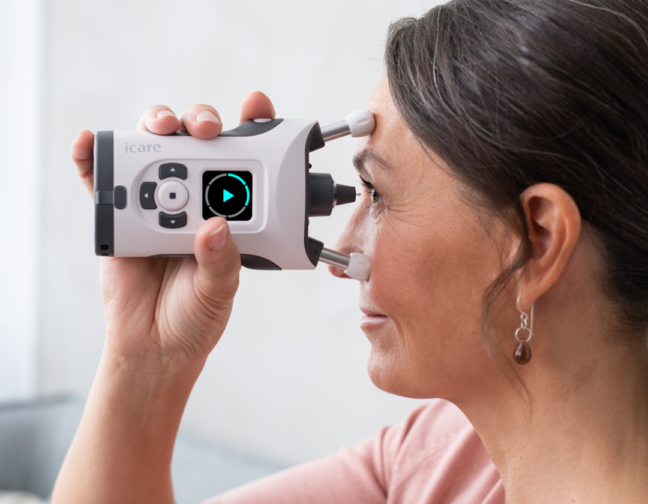A Swedish glaucoma specialist and a glaucoma patient, who has used the iCare HOME tonometer during several years, describe the benefits of self-tonometry in glaucoma care. They both agree that measuring IOP at home delivers better control over glaucoma management.
Dr. Mario Economou, glaucoma specialist at Sophia hemmet and Ögonläkargruppen Praktikertjänst in Sweden, and his patient, Mr. Tor Wådell, a glaucoma patient, give high praise to iCare HOME and HOME2 tonometers.
Doctors benefit from engaging patients with home measurements
“As a doctor, I find it a significant advantage when my patients have more knowledge and are interested and involved in the management of their eye pathology. Measurements with the iCare HOME and HOME2 tonometers are reliable, and the data helps us to better assess the status of any glaucoma present,” Dr. Economou states.
“Intraocular pressure (IOP) is the only clinical parameter that we ophthalmologists can influence with treatment. Therefore, it is very important to get a comprehensive view of diurnal IOP patterns over time,” he emphasizes.
Comprehensive IOP data provides better insight into the progression of glaucoma
Typically, ophthalmologists meet their glaucoma patients 2–3 times a year, during office hours, and take a single IOP measurement at each visit. Without self-tonometry, it is impossible to monitor short-term IOP fluctuations and adequately understand how the pressure behaves in between visits to the clinic.
“The iCare HOME2 tonometer provides valuable continuous IOP information. The data tells us how the pressure is affected for 24 hours when we change medication, do a laser treatment, or an operation. This way we have better control over the development of glaucoma and can better monitor the situation, even at a distance,” explains Dr. Economou.
Home IOP measurements helped to save Tor Wådell’s sight
Glaucoma patient Tor Wådell had pressure-lowering surgery and monitored his IOP at home with the iCare HOME tonometer.
“If I had not had the possibility to use the first version of iCare HOME at that time, the vision impairment in one eye could have been severe today”, Wådell explains.
Since the second surgery, Wådell has been using his iCare HOME2 tonometer to keep his eye pressure in check and his vision has stabilized. Wådell praises the iCare tonometers: “It is an incredible development to have a device at home that is so accurate. They are also very easy to use, and easy to set up, so that the handheld tonometer is in the right position.”
Read more about easy and accurate IOP self-measurement with the iCare HOME2 tonometer.
Close IOP monitoring provides security and reassurance for both the doctor and the patient
For Tor Wådell, the ability to keep track of his eye pressure independently affords a great sense of security.
For Dr.Economou, the benefits are obvious as well: “Home measuring involves patients in the management of their own glaucoma. The patient is much more cognizant of their situation, and it is easier for them to accept any changes in therapy or even decisions to undergo surgery, if needed.”
Contemplating further, he says: “In addition to monitoring patients’ IOP in relation to surgery, it would be very helpful to more closely monitor patients who are in a so-called risk zone. In these cases, the patient’s glaucoma is progressing, even though their in-office IOPs are within the target range. This particular profile gives us reason to suspect that short-term pressure variations should be monitored and held in check, with the help of self-tonometry.”
Clinical findings show that the iCare HOME self-tonometer demonstrates excellent potential to transform glaucoma diagnosis and management. Read more!



